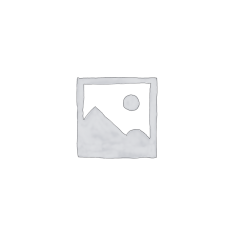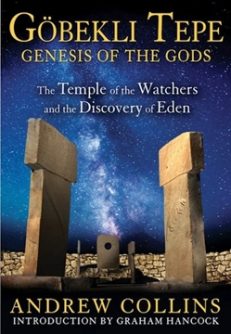Table of Contents
Acknowledgments
Note on Dating System Used
Illustration Credits
Introduction by Graham Hancock
Prologue In Quest of Angels
Part One
Construction
1 A Lifetime’s Work
2 Monumental Architecture
3 Frozen in Stone
4 Strange Glyphs and Ideograms
Part Two
Cosmos
5 Gateway to Heaven
6 Window on Another World
7 Turned toward the Stars
8 The Path of Souls
9 Cult of the Vulture
10 Cosmic Birth Stone
Part Three
Catastrophobia
11 The Hooded Ones
12 Fear of the Fox’s Tail
13 Cosmic Trickster
14 From a Fox to a Wolf
15 Twilight of the Gods
16 The Wolf Progeny
17 A Dark Day in Syria
18 Aftermath
Part Four
Contact
19 The Reindeer Hunters
20 Swiderian Dawn
21 The Solutrean Connection
22 Obsidian Obsession
23 The Bingöl Masters
24 Wolf Stone Mountain
25 Saviors of the World
26 Strange-Looking People
Part Five
Convergence
27 In the Garden of Eden
28 The Fountain of Paradise
29 The World’s Summit
30 Rise of the Anunnaki
31 The Making of Humankind
32 The Coming of the Watchers
33 Mountain of the Watchers
34 Walking with Serpents
Part Six
Completion
35 A Quiet Corner of Eden
36 The Red Church
37 The Secrets of Adam
38 As Angels Ourselves
39 The Return to Eden
40 A Trip to Paradise
41 Göbekli Tepe Revisited
42 A Loss of Innocence
Appendix Useful Dates
Notes
Bibliography
About the Author
Index
Excerpt
Chapter 12: Fear of the Fox’s Tail
The imposing central pillars in Göbekli Tepe’s Enclosure D both sport wide belts, at the front of which, beneath a centrally placed belt buckle, fox-pelt loincloths have been carved, the animal’s hind legs and long bushy tail extending down to knee level.
That leaping foxes appear also on the central pillars in the large enclosures at Göbekli Tepe suggests that the entrant passing between their twin central pillars would have encountered this vulpine creature upon accessing the otherworldly environment reached via the enclosures’ inner recesses.
So why foxes, especially as they are usually seen in primitive religions, especially in Africa, as cosmic tricksters, evil twins of the true creator god, responsible only for chaos and disarray in the universe?
Belt Buckle Clue
Was the fox the chosen animal totem of the Hooded Ones, the faceless individuals portrayed by the T-shaped pillars? If the answer is yes, then what does it mean? The key is the strange belt buckle immediately above the fox-pelt loincloth on the enclosure’s eastern pillar (Pillar 18). A similar belt buckle is seen on the western pillar (Pillar 31), although here it is left unadorned, in the same way that the figure’s belt, in complete contrast to the one worn by its eastern counterpart, is completely devoid of any glyphs or ideograms.
Only on the eastern pillar does the belt buckle reveal something very significant indeed. It shows a glyph composed of a thick letter U that cups within its concave form a large circle from which emerge three prongs that stand upward. That this emblem is worn centrally, on a belt festooned with strange ideograms, suggests that it has a very specific function.
Three-Tailed Comet
Having examined the belt buckle glyph at some length, it is the author’s opinion that it represents the principal components of a comet. The circle is its head or nucleus, the U-shape is the bow shock that bends around the front leading edge of the nucleus and trails away as the halo. The upright prongs denote three separate tails, with multiple tails being a common feature of comets.
That the comet’s “tails” on the belt buckle stand upward also makes sense, for these are often seen to trail into the night sky as the comet reaches perihelion. This is its final approach and orbit around the sun before reemerging on the other side in readiness for the return passage through the inner solar system. As this takes place the solar magnetic fields cause the gaseous particles of the comet to point away from the sun, and so when the comet is seen in the sky, either in the pre-dawn light or, alternatively, just after sunset, its tail or tails point upward from the horizon creating an unforgettable sight.
Mark of the Comet
Yet even assuming that the belt buckle glyph does show a comet, could this not simply be a personal device without any real meaning to the function of Göbekli Tepe? This appears unlikely, since the pillar is festooned with ideograms of a probable celestial nature. The belt’s C and H glyphs would appear to have cosmological values, as does the carved eye held within a slim crescent worn around the “neck” of the T-shaped monolith. In addition to this, it does seem as if Enclosure D’s eastern central pillar has a greater function than its western neighbor, almost as if one twin is alive, while the other functions as a ghost or echo of the other.
Regardless of these facts Pillar 18’s belt buckle is simply not enough to demonstrate that comets held some importance at Göbekli Tepe. There is, however, another tantalizing link between the symbol of the comet and Enclosure D–this being the fox-pelt loincloths seen beneath the belt buckle on both monoliths. Universally the fox, andthe fox tail in particular, has been seen as a metaphor for comets due to the hairlike appearance of their long tails. Even in British heraldry the device known as the comet or blazing star is drawn to resemble the fox’s tail. It is for this reason that comets have occasionally been personified as having clear vulpine and–as we shall see–canine (doglike) and lupine (wolflike) qualities of a dark, foreboding nature.
That the hunter-gatherers of southeast Anatolia so readily gave up their nomadic lifestyles in order to build monumental architecture in an unprecedented manner argues persuasively that this incoming, godlike company of the “Hooded Ones”–represented by the T-shaped pillars–must have had some kind of hold or influence over the people. Perhaps they claimed they had some direct connection with the supernatural creature behind the manifestation of comets.
Is it possible that the enclosures embody a belief that by synchronizing the enclosures with cosmic time cycles it would help provide the builders with enough information to control the influence of comets on a supernatural level? Was it these communities’ absolute fear and loathing of comets that motivated them to abandon their old lifestyles in order to build monumental architecture on such a grand scale?
Excerpt from Inner Traditions
Andrew Collins has been investigating the idea of an advanced civilization existing before recorded history since 1979, focusing on southeast Turkey since the early 1990s. He is the co-discoverer of a massive cave complex beneath the Giza plateau, now known as “Collins’ Caves.” The author of From the Ashes of Angels, Gods of Eden, The Cygnus Mystery, andGateway to Atlantis, he lives in Essex, England.























